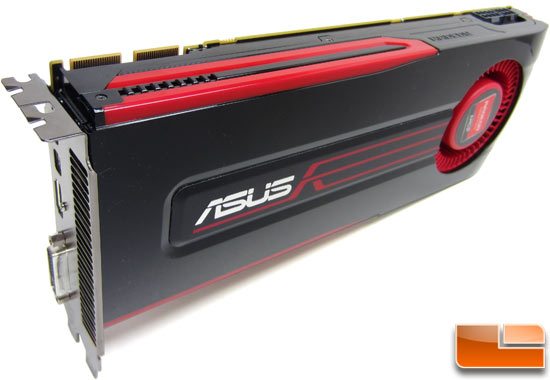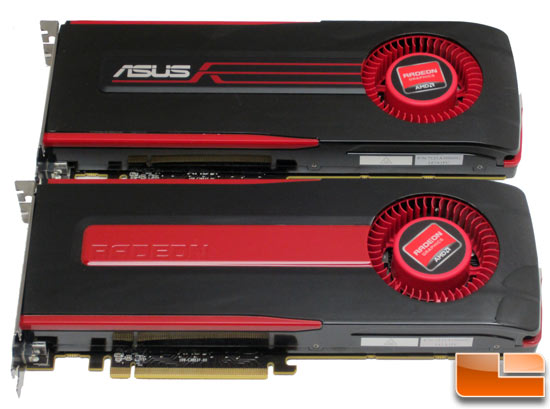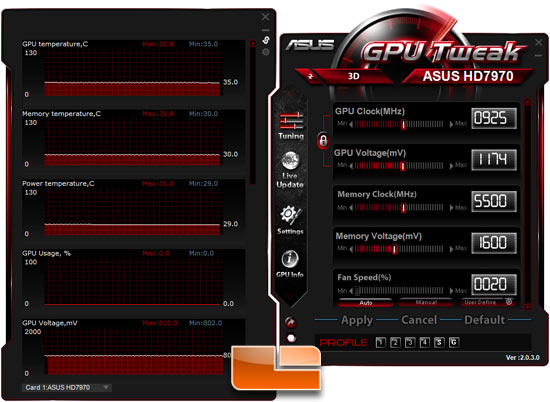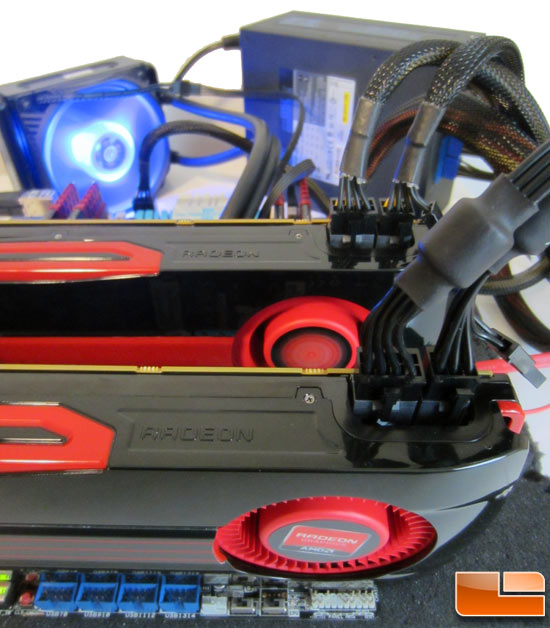ASUS Radeon HD 7970 3GB CrossFire Review
Our First Retail Radeon HD 7970 GPU!
The AMD Radeon 7970 is without a doubt one of the hottest video card of 2012, but then again it’s the only new desktop graphics card to be released so far this year. Last month we posted our review on the AMD Radeon HD 7970 reference card and found it to be a winner. While attending the 2012 Consumer Electronics Show (CES) we were told that custom designed cards were still 30-45 days out for most manufactures, so for the time being most companies will be selling entirely reference designed cards with new name plates on them.

When the ASUS Radeon HD 7970 3GB video card (model # HD7970-3GD5-3DI2S) showed up it was instantly obvious that this was based off the AMD reference design.

A quick phone call to ASUS confirmed this and rather than doing an identical review they asked if we could run the cards in CrossFire to see what two of these beasts could to in tandem. We don’t always test every card that gets sent to us in multi-GPU configurations, so it sounded like a good idea to us.

The one feature that ASUS feels that separates them from the rest is the included GPU Tweak utility. ASUS is using an unlocked BIOS that allows for clock speed and voltage increases on both the GPU and GDDR5 memory. All gamers need to do is install the utility and go into the advanced settings to enable the ‘overclocking range enhancement’ check box. Once this is down you can adjust the settings within reason:
- GPU Core: 725 – 1850 MHz
- GPU Voltage: 1100 – 1250 mV
- Memory Clock Frequency: 4700 – 9999 MHz (effective)
- Memory Voltage: 1500 – 1750 mV
The ASUS GPU Tweak utility also includes live monitoring graphs, fan control and gobs of other features. It is certainly a nice utility and one of the highlights of this card.

AMD has spent years perfecting CrossFire and with the release of the Radeon HD 7000 series the company introduced AMD ZeroCore Power technology. This means that when you are running in CrossFire that the additional cards will nearly completely power down when not in use to reduce noise, power use and heat output. These are all areas that have been a concern to us as when you get a multi-GPU system in a room, be it AMD CrossFire or NVIDIA SLI, we notice an increase in the room temperature and noise. When we benchmarked this card it was strange seeing the secondary card sit ‘off’ and then come to life when a game or benchmark was fired up requiring 3D power. Even though we were running Radeon HD 7970 CrossFire the system acted like it running just a single-card during normal use. Let’s not spoil all the fun and take a look at the retail packaging and then the performance of this card!

Comments are closed.